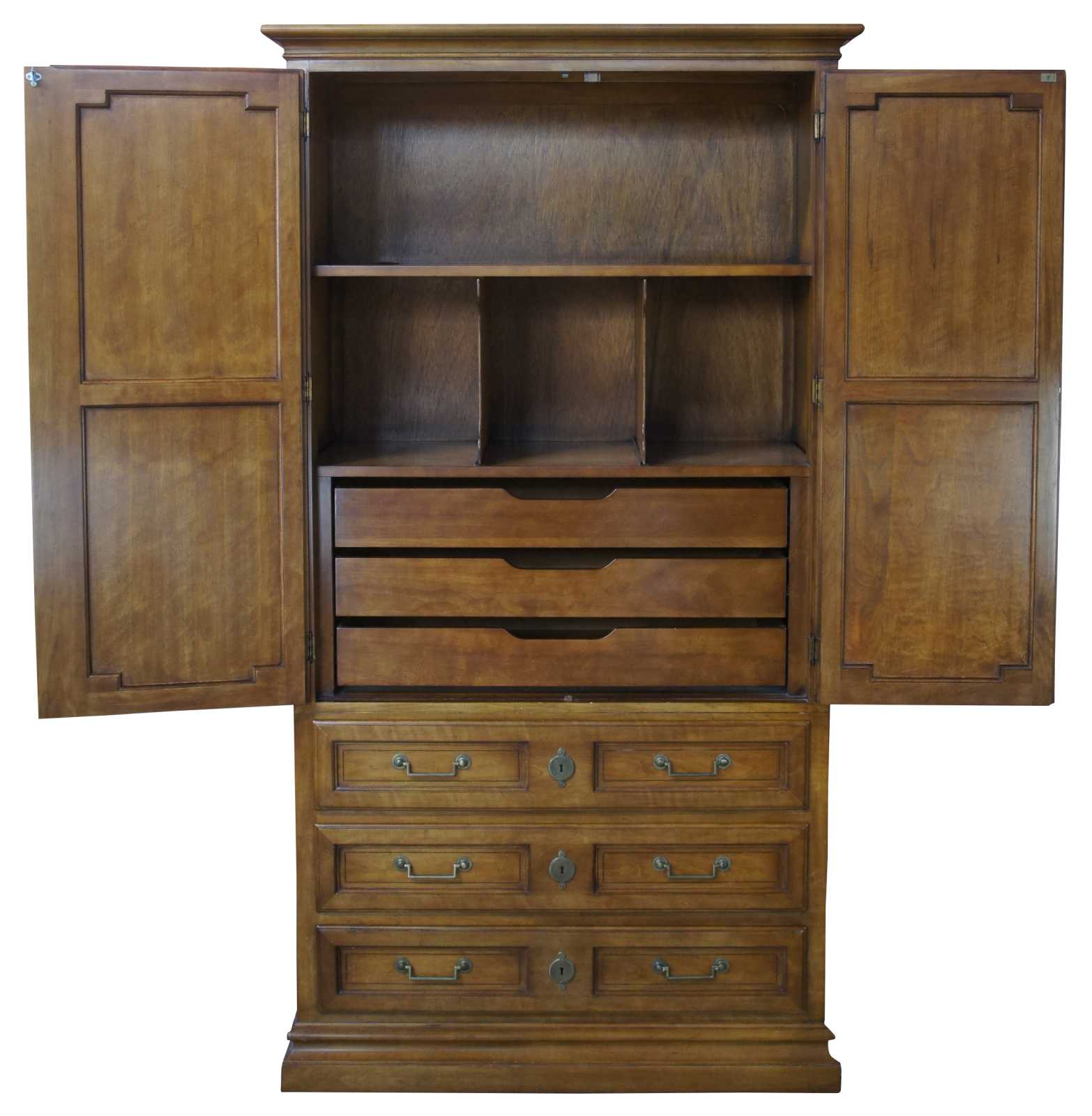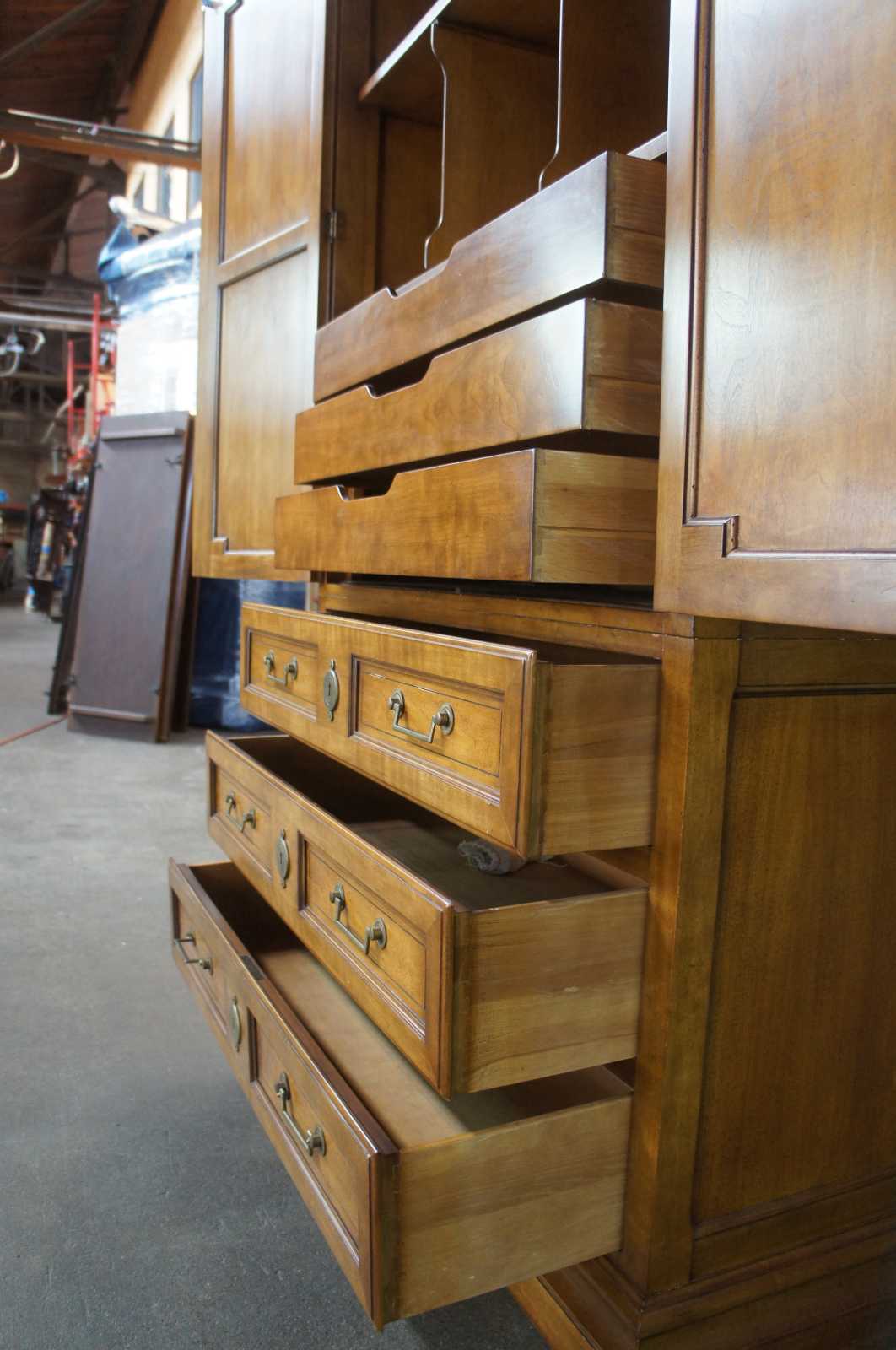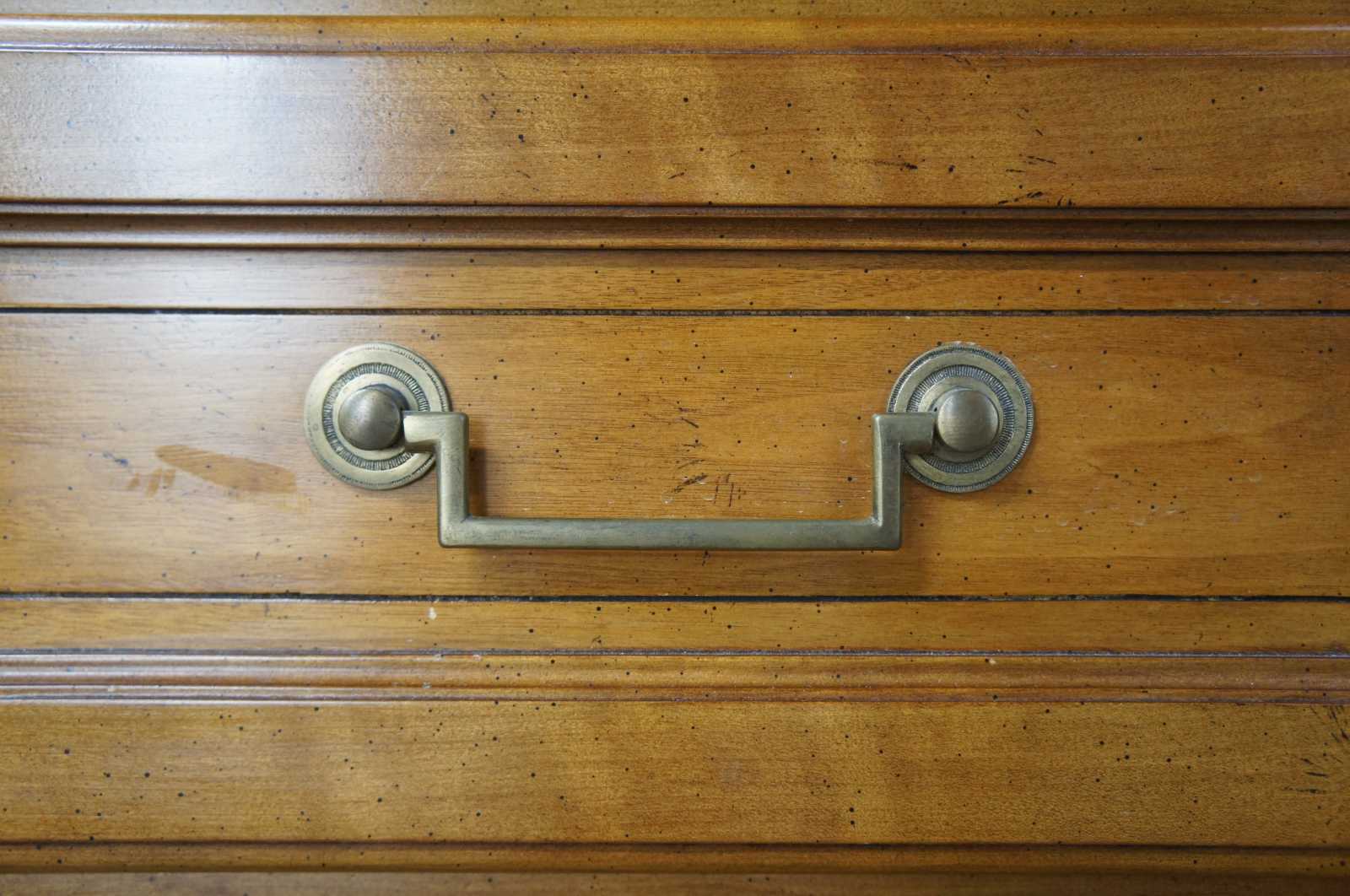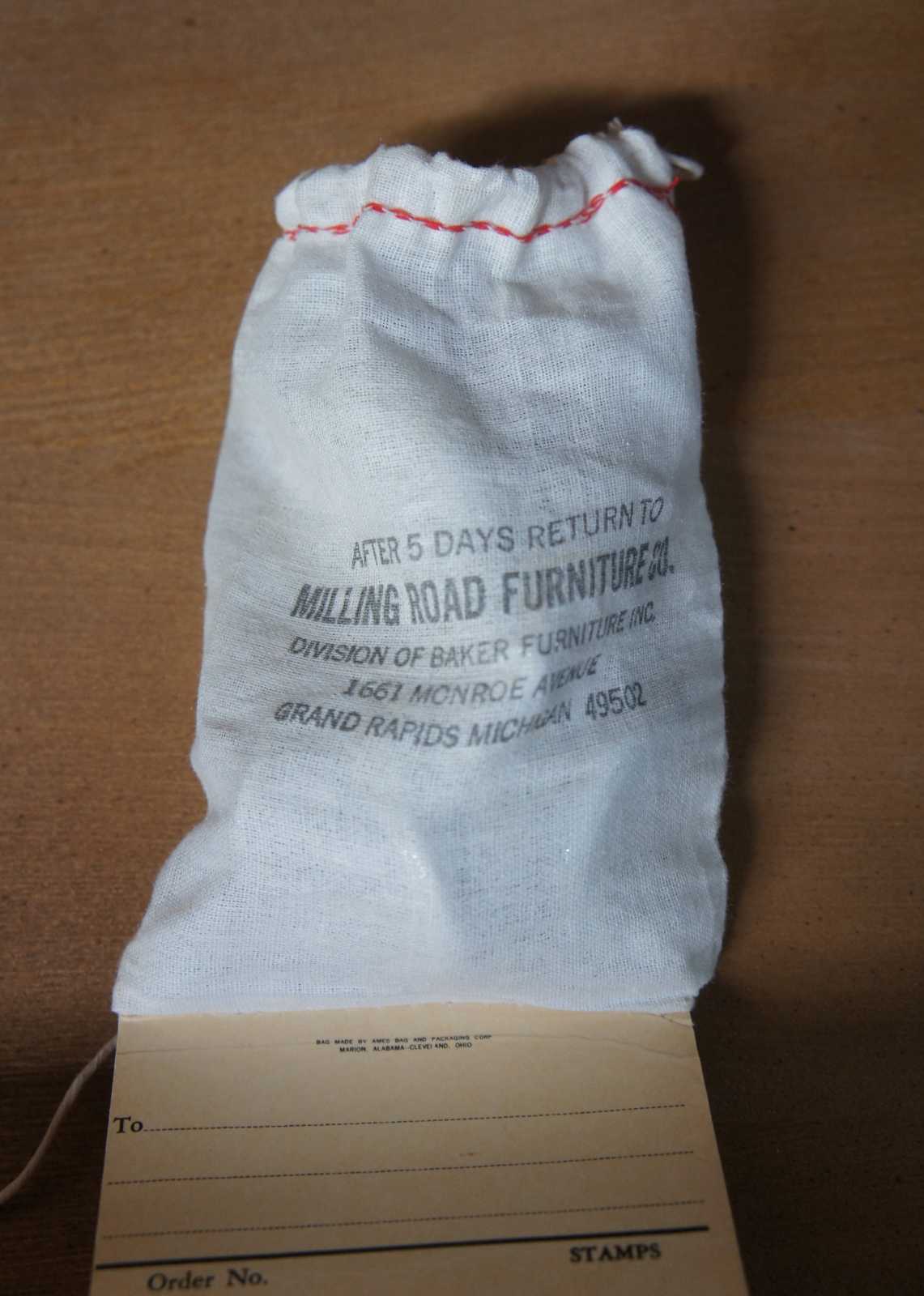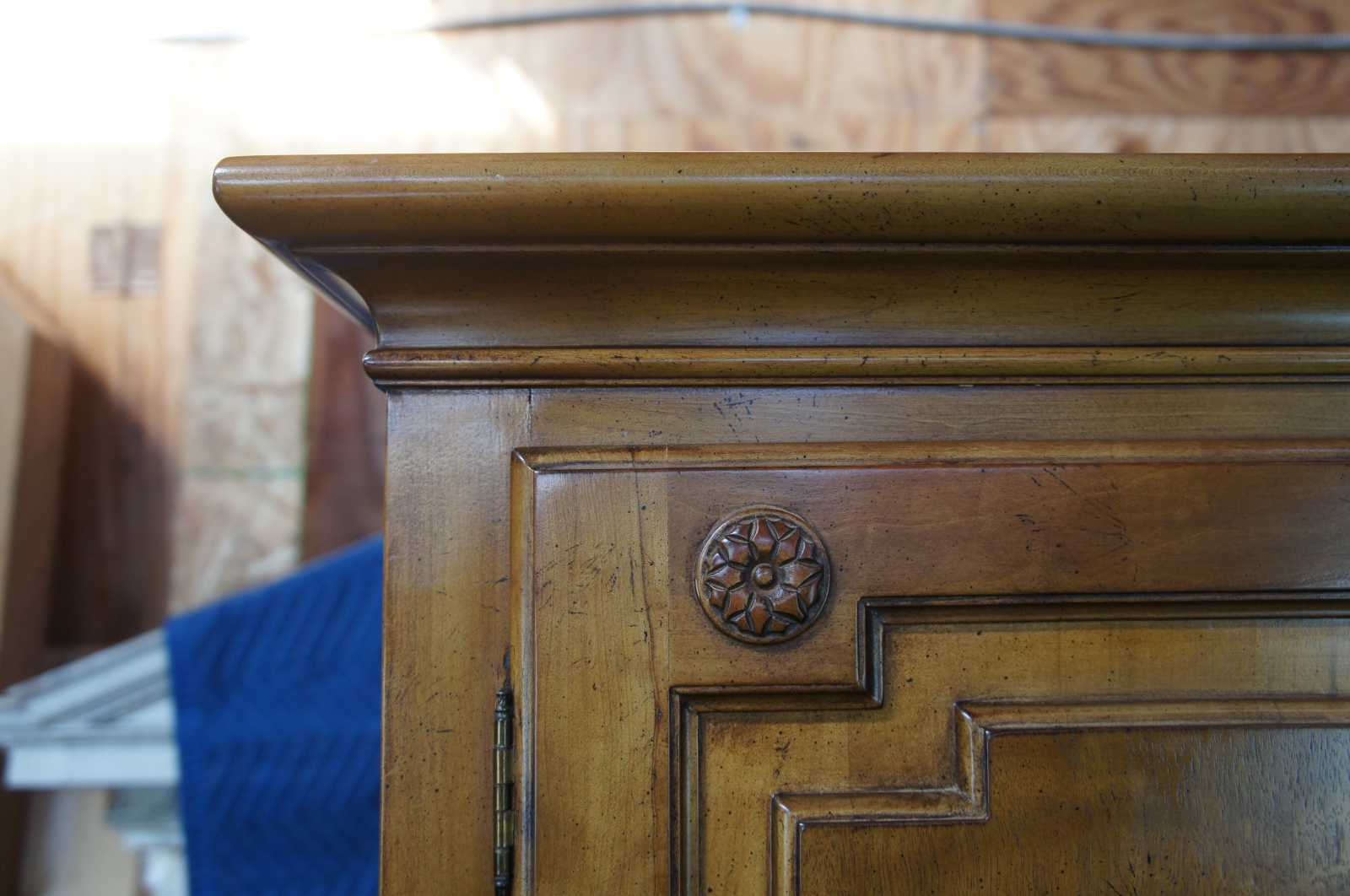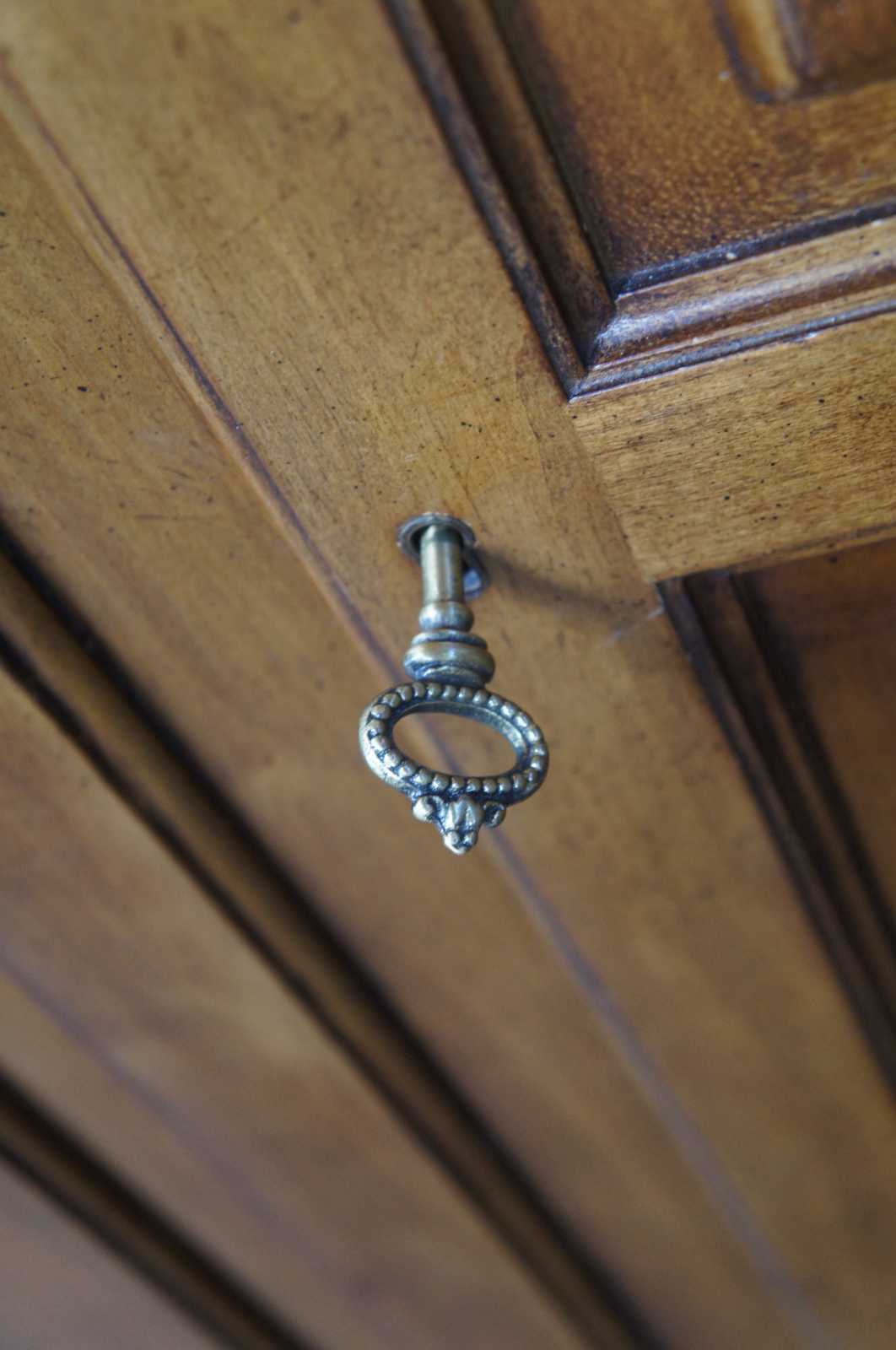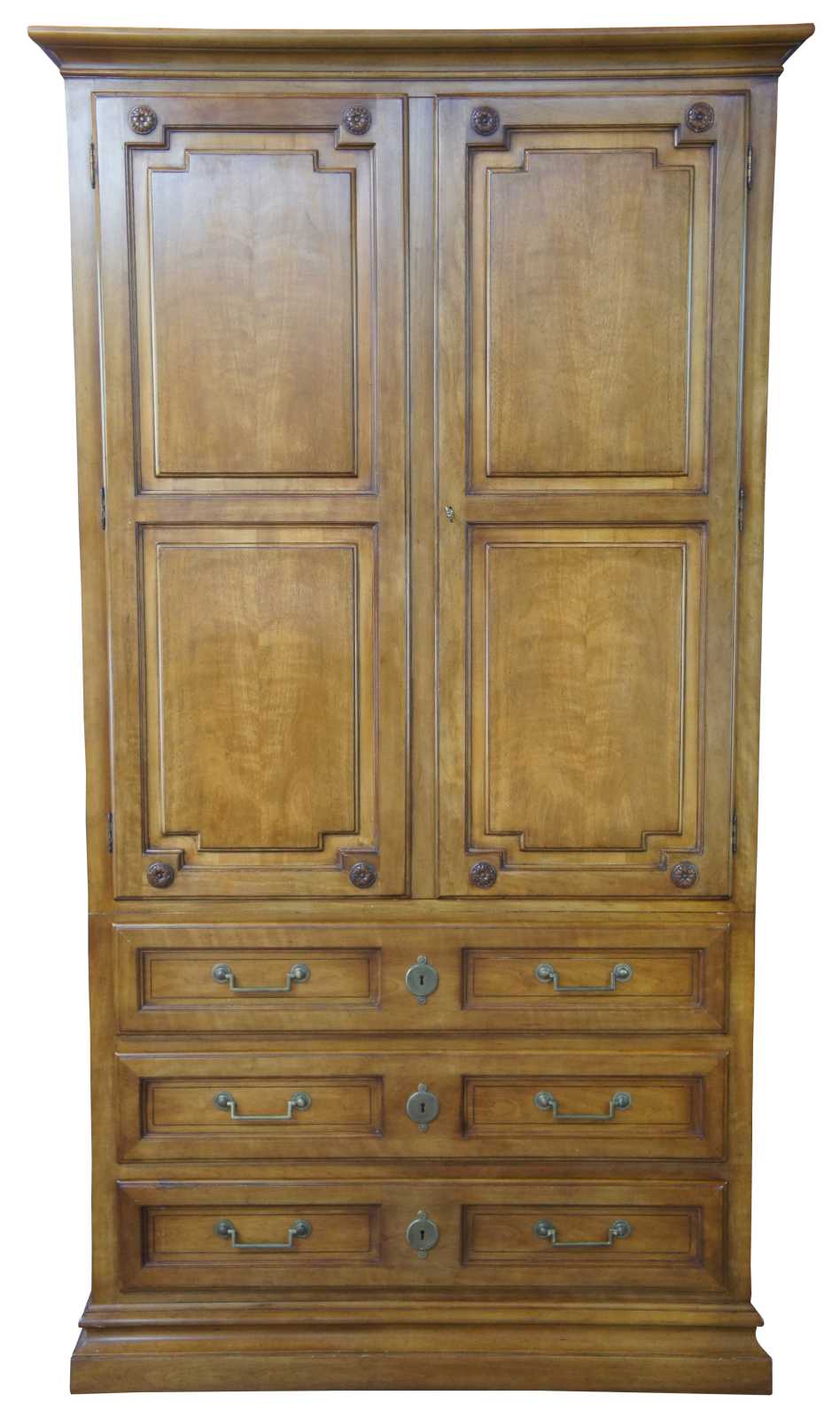
Baker Milling Road Neoclassical Walnut Linen Press Dresser Armoire Wardrobe 79"
Sold
Shipping:
Free Shipping Included
Delivery:
Estimated 2-15 Business Days
Payments:
Credit Card, Check, Cash, PayPal, Apple Pay, Venmo
Returns:
30 Days 100% Money Back Guarantee, Buyer Pays Return Shipping
Description
Baker Furniture Milling Road clothing armoire, circa 1980s. Made of naturally distressed walnut featuring six large drawers and four cubbies for garments. Features a beautiful paneled front, French inspired floral carved medallions and neoclassical brass hardware. Includes key for upper cabinet.
Provenance : Jerome Schottenstein Estate, Columbus Ohio. Jerome was was an American entrepreneur and philanthropist, co-founder of Schottenstein Stores Corp. The Schottenstein family were Lithuanian immigrants who began an extensive business empire in the late 19th Century. Schottenstein Stores owns stakes in DSW and American Signature Furniture; American Eagle Outfitters, retail liquidator SB360 Capital Partners, over 50 shopping centers, and 5 factories producing its shoes and furniture. It also holds an ownership interest in American Eagle Outfitters, Wehmeyer in Germany, Cold Stone Creamery and The Mazel Company.
Baker History
The Begining
Siebe Baker, an immigrant from the Netherlands, founds an interior woodwork and door company in 1890 in Allegan, MI, just west of Grand Rapids. The company makes its first piece of furniture three years later, a combination desk and bookcase. Hollis S. Baker, son of Siebe Baker, graduates from the University of Michigan in 1910 and joins Baker Furniture as a salesman.
1920s and 30s
Baker ventures into Modernism with its Art Deco “Twentieth Century Shop,” introduced in 1925 and including several pieces designed by Donald Deskey. Hollis Baker becomes the company’s president upon his father’s death. Baker launches bedroom furniture from stage designer Joseph Urban and select furniture by noted modernist Kem Weber in 1927, leading the debut of the Modern movement in the U.S. The company introduces its Manor House collection, the first great furniture reproduction program in America, in 1932. The designs are mainly English, crafted by experts hand-picked from Europe. Two years later, Baker introduces Chinese Modern furniture to Americans at the Chicago World’s Fair.
1940s and 50s
In 1941, more than 1,500 antiques collected by Hollis S. Baker are formally organized and placed on display, comprising one of the largest private furniture collections in the world. Baker introduces the Far East Collection, the first truly Asian furniture collection manufactured in the U.S., in 1949. The next year, the company popularizes Italian neoclassic design with the introduction of its first Palladian Collection, based on exhaustive study of countless museum originals. Acclaimed designer Finn Juhl partners with Baker in 1951 on the first Danish Modern furniture collection for the American market. In 1957, Baker acquires the Grand Rapids Chair Co. and begins to produce an assortment of simpler, less costly furniture under the Milling Road label.
1960s and 70s
Hollis M. Baker becomes the company’s president in 1961, finding new niches in the luxury market and introducing a wealth of new collections. Baker opens a new manufacturing facility in Mockville, NC, in an effort to create the industry’s highest-quality production-made furniture. Introductions during the 1960s and 1970s included collections of country English and French Provincial furniture, as well as high-end executive desks. Collection highlights include Woburn Abbey, introduced in 1969, featuring 25 choice English antiques of the home of the Duke and Duchess of Bedford. Baker merges with a leading showroom network in 1972 to form Baker, Knapp & Tubbs, which remains one of the largest wholesale distributors in the industry. A year later, it enters the upholstery business with a new plant and division located in High Point, NC. The company launches the Historic Charleston Collection in 1976, drawing inspiration from one of the most fashionable and furniture-forward capitals of the New World.
1980 to 2000
In 1980, innovative Italian interior designer Alessandro Gambrielli Gambalogna creates a collection of approximately 25 avant garde occasional and dining room items simply known as Alessandro. A year later, Baker launched its Stately Homes Collection, with reproductions from originals found in celebrated castles and estates in the United Kingdom. The positive reception of John Saladino’s 1984 Façade Collection launch reaffirms the importance of Baker’s work with top designers around the world. Kohler Co. acquires Baker Furniture from North American Phillips in 1986, making it the cornerstone of its Interiors Group. The late ‘80s mark significant debuts, including the McMillen Collection, continental furniture drawn from the archives the much heralded New York design firm, and the Charles Pfister Collection of Art Deco furniture. Milling Road is re-introduced as a division of Baker in 1990, offering less formal, more livable furniture at a lower price point. That same year, the Smithsonian inducts the #789 Chippendale Chair into its permanent collection. In 1996, Baker introduces the Barbara Barry Collection, featuring furniture from the California-based artist and designer that draws on 30’s Hollywood glamour.
2000 to 2015
During this decade, Baker debuts collections from a series of celebrated designers, including Bill Sofield, Thomas Pheasant, Laura Kirar, Michael S Smith and Jacques Garcia. In 2005, Baker launches Collector’s Edition, inspired by classic European designs, and in 2008 and 2009, extraordinary collections from design luminaries Tony Duquette and Andre Arbus. Hollywood royalty experiences Baker elegance firsthand when the company is asked to furnish the Green Rooms for the Academy Awards presentations in 2011 and 2013. During this same period, the company provides furniture for a VIP lounge at Mercedes Benz Fashion Week three years running. This later era marks a flurry of international showroom openings: in Paris, Moscow, Singapore and three cities in China.
Condition
Very good overall, light distressing and edge wear.
Dimensions
43" x 19" x 79"h

